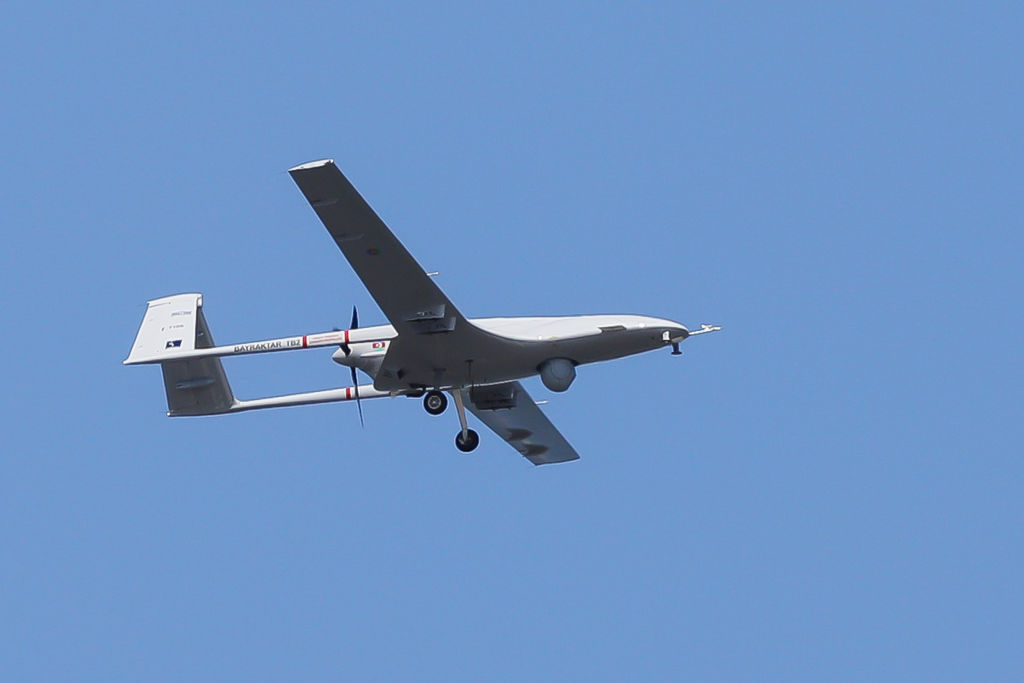ADF STAFF
Burkina Faso has become the third West African country to acquire Turkish-made armed drones for use in the fight against extremism.
The Bayraktar TB2 unmanned aerial vehicles are increasingly in demand by countries looking for relatively cheap air power to give them an upper hand against insurgent groups. Niger and Togo purchased TB2s recently. Analysts say the appeal of the weapon is clear.
“They can stay in the air for a long time, differentiate between targets and wait for a shot even if there is a short-range air defense system,” Akram Karief, an Algerian defense journalist, told Radio France-Internationale. “So, it allows them to stay back and hit high value targets with a minimal cost.”
The drones, which are about the size of a small plane, can fly at a height of 8 kilometers, have a range of 150 kilometers and can stay in the air for 27 hours. In Ukraine, they are credited with helping turn the tide against Russian forces after a Ukrainian general claimed two drones had destroyed Russian tanks and weaponry worth $27 million in just three days.
But the use of the drones is also alarming observers who warn of the possibility of civilian casualties or the targeting of peaceful dissident groups. In Burkina Faso and Togo, there already have been reports of mistakes with the drones that caused civilian deaths.
“The concern with drone use in the region is that it lowers the threshold for the use of lethal force — in particular in situations which are not armed conflicts — which is very worrying, because those kind of means and methods can be easily seen as a sort of easy fix for a complex issue,” Wim Zwijnenburg of PAX, an organization that studies global conflict and the use of military technology, told the Voice of America.
Of particular concern is the precedent set by drone use in the civil war in Ethiopia, a country that has a fleet of Iranian, Turkish and Chinese-made drones. Reports compiled by aid organizations this year found that 300 civilians had been killed in drone and air strikes.
Still, for Sahelian countries bedeviled by violence, the drones offer the opportunity to project force in vast, sparsely populated regions where extremist groups operate.
“They face the complex challenge of curbing highly motivated and mobile bands of Islamist militants, camping out in the bush and moving quickly through the scrubby terrain of the Sahel by motorbike,” wrote Paul Melly, a consulting fellow at Chatham House, in a piece published by the BBC.
In the Sahel, drones might be more valuable as reconnaissance tools than for their weaponized capabilities.
“What is most important for a drone is to know where to send it,” journalist Wassim Nasr, a specialist in extremist violence, told Agence de Presse Africaine. “It’s the equivalent of a flashlight, armed or not, that lights up a specific target.”
Most observers believe that drones can help in some scenarios, but fights against extremism ultimately will be decided by traditional military force and other on-the-ground, counter-extremism programs.
“Unfortunately, it won’t be the decisive factor, given the nature of the groups, the number of armed men and their adaptability when faced with the threat of drones,” Karief said.
He also warned that, if used carelessly, drones can do as much harm as good. “There is the risk of collateral damage that, unfortunately, increases the spirit of vengeance and pushes more to join the armed groups,” Karief said.

